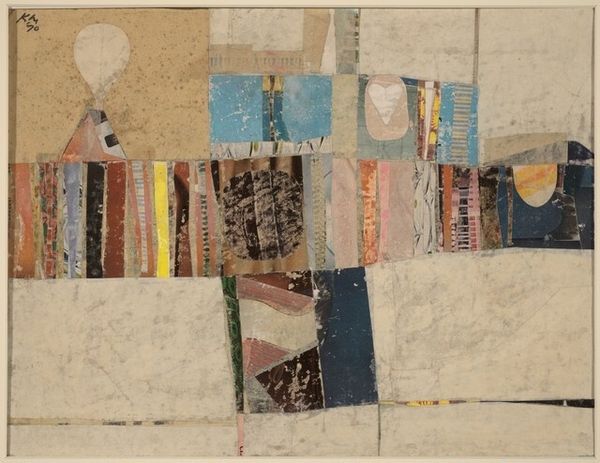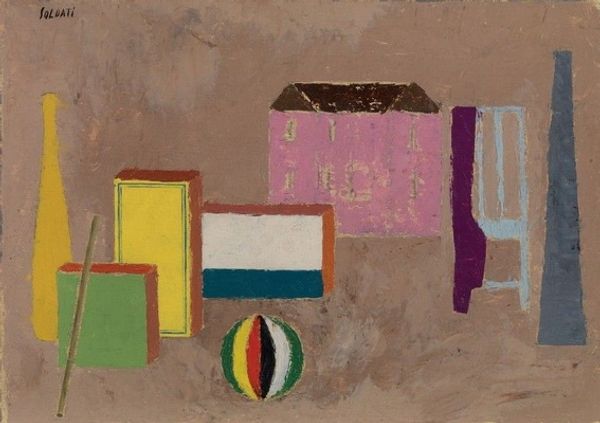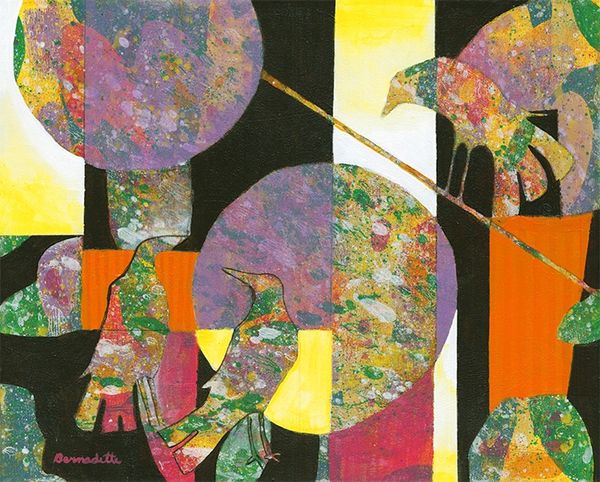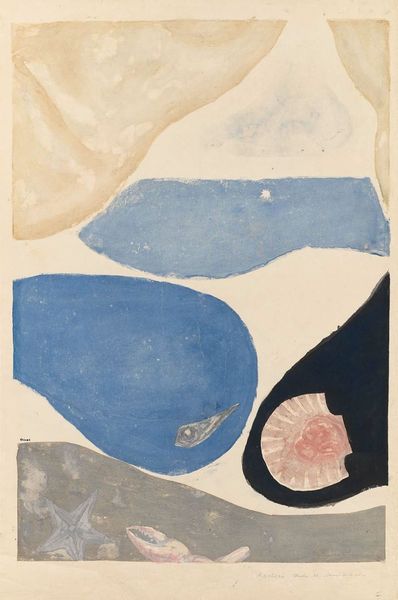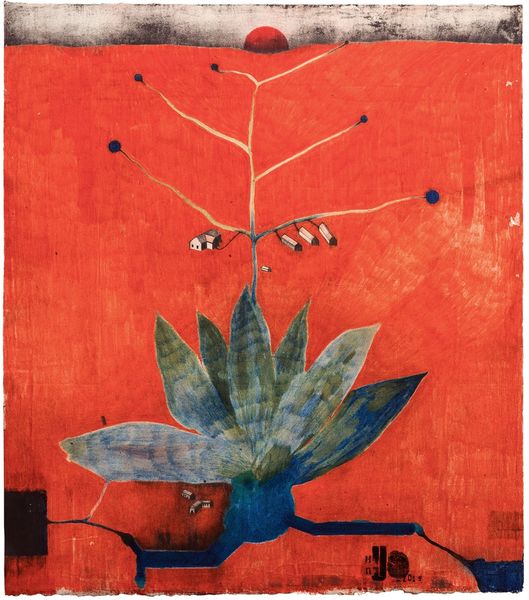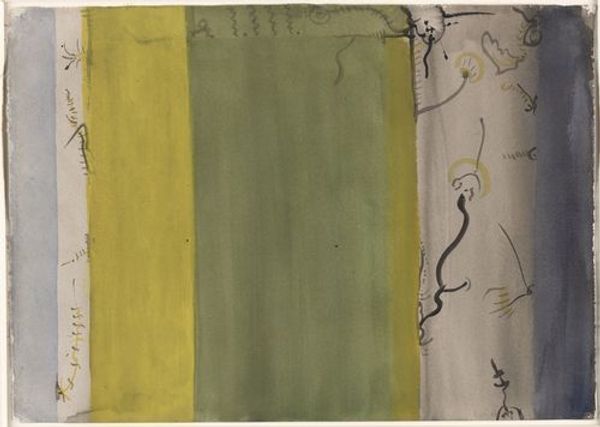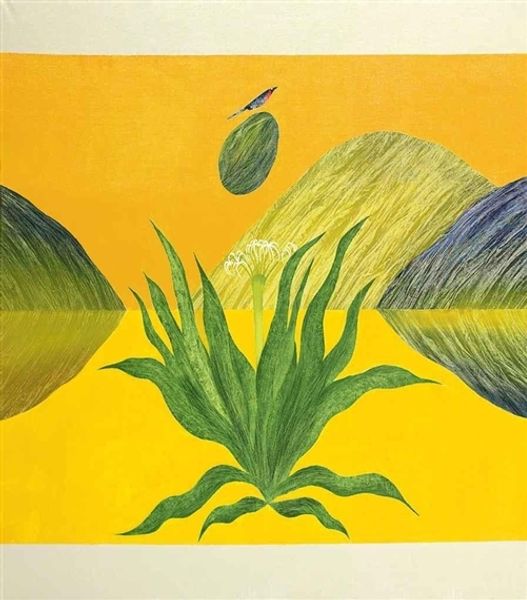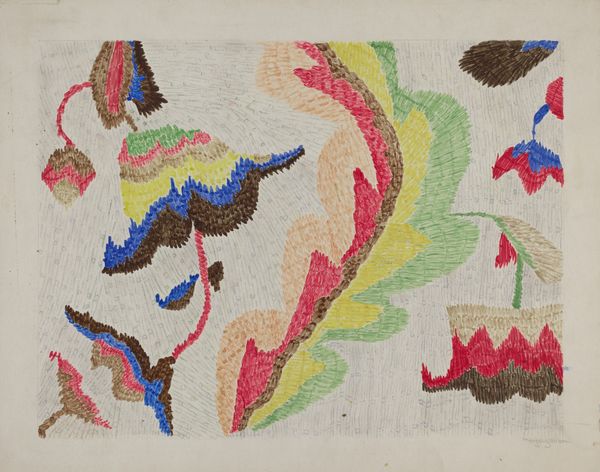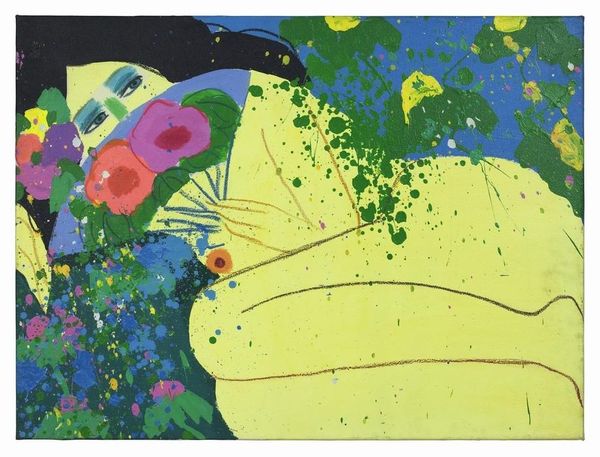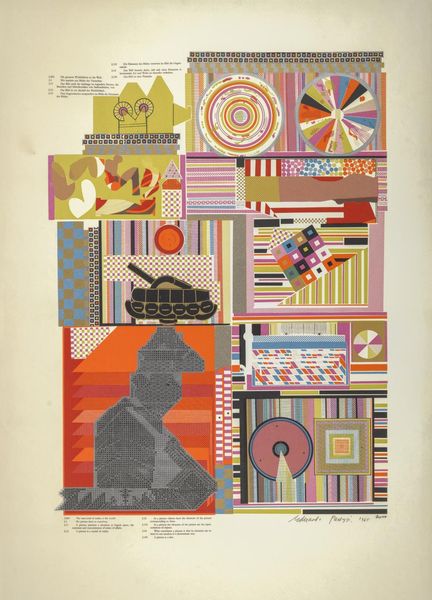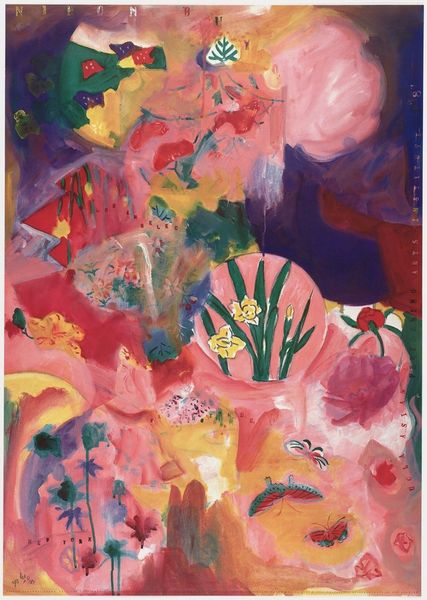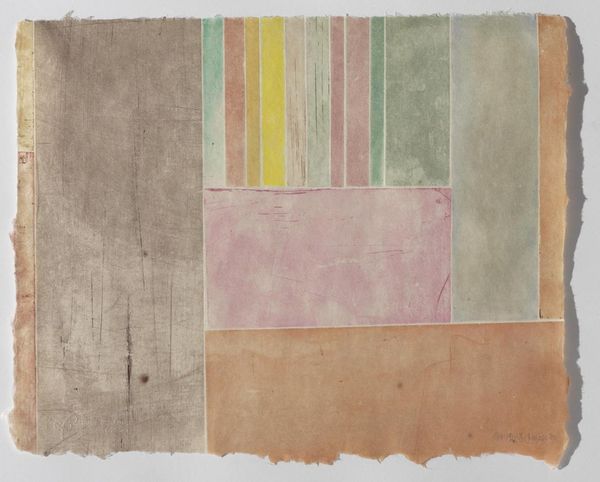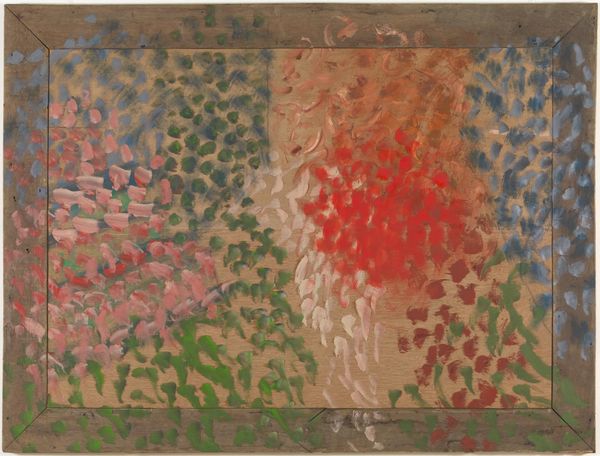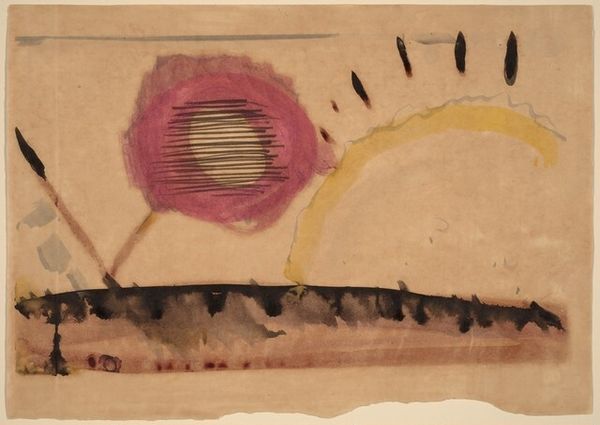
#
isolated focal point
#
handmade artwork painting
#
acrylic on canvas
#
white focal point
#
painting painterly
#
watercolour bleed
#
watercolour illustration
#
central focal point
#
remaining negative space
#
watercolor
Copyright: Martial Raysse,Fair Use
Curator: Martial Raysse created "La France en deux," or "France in Two," in 1963, using acrylic on canvas. What strikes you upon seeing it? Editor: It's jarring, isn't it? The diptych format, the mismatched colors, and that unsettling portrait fragment bisected between the two panels… it all feels like a nation pulling itself apart. Curator: Indeed. Consider Raysse's process: he begins with a reproduced image, perhaps from a magazine, a readily available commodity in burgeoning consumer culture. He then meticulously manipulates the canvas surface with those manufactured colours. Editor: The woman's turban-like headdress, her cool gaze, the leaves strategically placed – it reminds me of classical portraits. But disrupted. Is Raysse referencing Marianne, the symbol of France, and fracturing her image? Curator: Possibly. The two panels themselves are key. Notice how one features the portrait fragment against vibrant, artificial hues, while the other panel is almost barren, save for a few desolate… are those cotton balls? He’s certainly inviting comment on material excess versus starkness. Editor: Exactly! It is almost as if the image is cleaved, dissected on the canvas, mirrored on a divided population or disparate elements struggling for wholeness or attention on the canvas. It gives this really visceral effect. Curator: It's definitely about tension. It feels indicative of that period of shifting national identity in France, a break from tradition amidst a rising tide of consumerism and mass media. Editor: So, even the materials themselves are a comment? Acrylic paint, mass-produced and easily accessible, stands in stark contrast to the symbolism associated with France: liberty, revolution, identity, unity… It all underscores this disquiet. Curator: It highlights the societal shifts he was witnessing and participating in. By literally "splitting" France, Raysse compels the viewer to confront these uncomfortable truths. It makes us question the very definition of French identity. Editor: And for me, seeing it this way enriches the visual experience and makes me wonder what my own symbolic association is of it. The broken mirror can become whole. Curator: Yes. His daring process allowed for the very substance and making of the piece to give equal power as its symbolism.
Comments
No comments
Be the first to comment and join the conversation on the ultimate creative platform.
